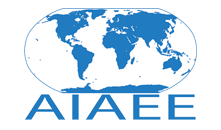Keywords
Internationlization, Study Abroad, Experiential Learning, Preflection, Latin America
Abstract
If American universities and colleges desire to maintain a position at the forefront of global institutions of learning, they must work to create graduates who are able to demonstrate global competence. In the university setting, globalization is often addressed through strategies such as study abroad opportunities, travel courses, and globallyfocused courses. Aside from study abroad opportunities, faculty members bear the greatest responsibility for providing students with exposure to international content. The USDA-funded Teaching Locally, Engaging Globally (TLEG) project provides oneeffort to increase the international experience of faculty. In a qualitative study of this project, a diverse group of faculty members from one university were selected to participate in an international experience in Ecuador. Prior to the experience, participants were asked to complete a reflection activity regarding the attitudes and beliefs they had prior to visiting Latin America in order to provide awareness of potential assumptions and biases. Five main themes that emerged from the analysis (influences on pre-trip attitudes, the physical environment, social expectations, cultural identity and government) were found to be consistent with current research. It is therefore recommended that preflective activities be used when planning international faculty experiences.
Rights Statements
This Item is protected by copyright and/or related rights. You are free to use this Item in any way that is permitted by the copyright and related rights legislation that applies to your use. For other uses you need to obtain permission from the rights-holder(s).
Recommended Citation
Gouldthorpe, J. L.,
Harder, A.,
Stedman, N. L.,
&
Roberts, T. G.
(2012).
Steps toward Internationalization in Undergraduate Programs: The Use of Preflective Activities for Faculty International Experiences.
Journal of International Agricultural and Extension Education, 19(1), 30-41.
DOI: https://doi.org/10.5191/jiaee.2012.19105



